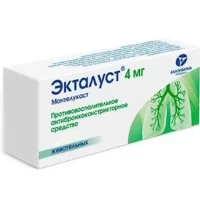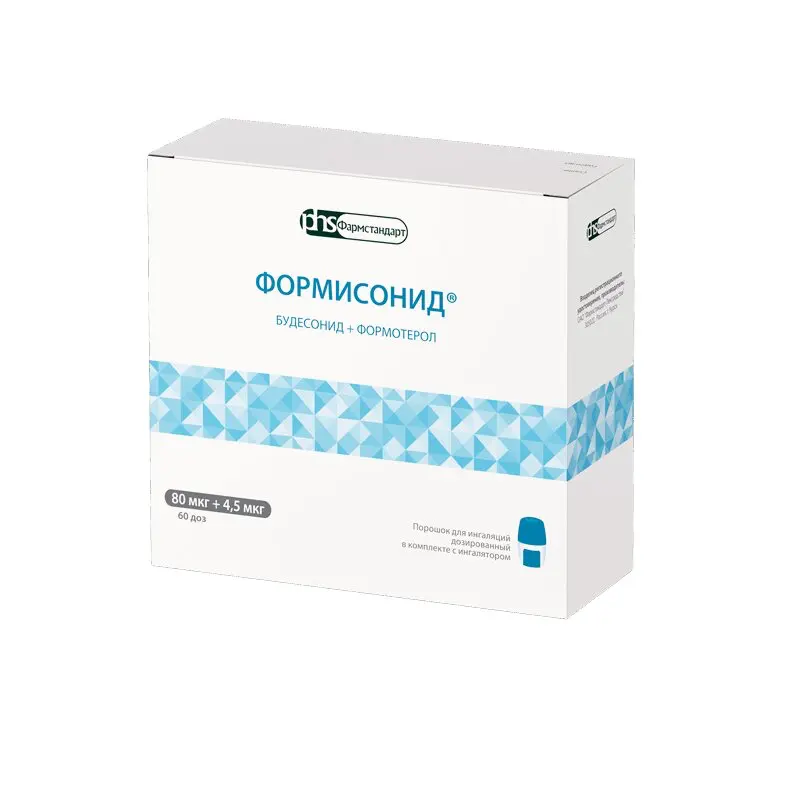Description
Ipraterol Pharmacodynamics
Ipraterol contains two components with bronchodilator activity: ipratropium bromide ? m-cholinoblocker, and fenoterol ? ?2-adrenomimetic.
Bronchodilation during inhalation administration of ipratropium bromide is mainly due to local rather than systemic anticholinergic action.
Ipratropium bromide is a quaternary ammonium derivative with anticholinergic (parasympatholytic) properties. Ipratropium bromide inhibits vagus nerve reflexes by counteracting the effects of acetylcholine, a mediator released from the vagus nerve endings. Anticholinergic agents prevent the increased intracellular concentration of calcium ions that occurs due to the interaction of acetylcholine with muscarinic receptors of bronchial smooth muscle. Calcium ion release is mediated by a system of secondary mediators, which include inositol triphosphate (ITP) and diacylglycerol (DAG).
In patients with bronchospasm associated with chronic obstructive pulmonary diseases (chronic bronchitis and pulmonary emphysema), a significant improvement in lung function (increase in forced expiratory volume in 1 second (FEF1) and peak expiratory flow (PEF) by 15% or more) is observed within 15 minutes, the maximum effect is achieved after 1-2 hours and continues in most patients up to 6 hours after administration.
Ipratropium bromide has no negative effect on airway mucus secretion, mucociliary clearance and gas exchange.
Fenoterol selectively stimulates ?2-adrenoreceptors at the therapeutic dose. Stimulation of ?1-adrenoreceptors activates adenylate cyclase through stimulation of GS-protein. Stimulation of ?1-adrenoreceptors occurs at high doses. Fenoterol relaxes the smooth muscles of the bronchi and vessels and counteracts the development of bronchospastic reactions caused by histamine, methacholine, cold air and allergens (immediate-type hypersensitivity reactions). Immediately after use, fenoterol blocks the release of inflammatory mediators and bronchoconstriction from mast cells. In addition, when using fenoterol in doses of 0.6 mg, an increase in mucociliary clearance is noted.
The ?2-adrenergic effects of the drug on cardiac activity, such as increased heart rate and force, are due to the vascular action of fenoterol, stimulation of the ?2-adrenoreceptors of the heart, and, when using doses higher than therapeutic, stimulation of the ?1-adrenoreceptors.
As with the use of other ?-adrenergic drugs, prolongation of the QTc interval when using high doses is observed. When using fenoterol with metered-dose aerosol inhalers (MDI), this effect was inconsistent and was noted when doses higher than recommended were used. However, after using fenoterol with a nebulizer (standard-dose inhalation solution in vials), the systemic effect may be higher than when using the drug with a DAI in the recommended doses. The clinical significance of these observations has not been established.
Tremor is the most common undesirable effect when using ?1-adrenoreceptor agonists. In contrast to the effects on bronchial smooth muscles, tolerance may develop to the systemic effects of the ?1-adrenoreceptor agonists, but the clinical significance of this phenomenon has not been identified.
When using ipratropium bromide and fenoterol together, the bronchodilator effect is achieved by affecting different pharmacological targets. These active substances complement each other, and as a result, the antispasmodic effect on the bronchial muscles is enhanced and a greater breadth of therapeutic action in bronchopulmonary diseases accompanied by airway constriction is provided. The complementary action is such that a lower dose of the ?-adrenergic component is required to achieve the desired effect, which allows individual selection of the effective dose with almost complete absence of side effects of Ipraterol.
In acute bronchoconstriction, the effect of Ipraterol develops rapidly, which allows its use in acute attacks of bronchospasm.
Indications
Symptomatic treatment of chronic obstructive airways diseases with reversible airway obstruction, such as bronchial asthma, chronic obstructive pulmonary disease (COPD), chronic obstructive bronchitis with or without pulmonary emphysema.
Contraindications
– Hypersensitivity to ipratropium bromide, fenoterol, as well as to other atropine-like substances and auxiliary components included in the preparation.
– Hypertrophic obstructive cardiomyopathy.
– Tachyarrhythmia.
– I trimester of pregnancy.
Dosage and administration method
- Inhalation.
Treatment should be carried out under medical supervision (eg, in hospital). Treatment at home is possible only after consultation with the doctor in cases when a fast-acting ?-agonist in a low dose is not effective enough. The inhalation solution may also be recommended to patients when an aerosol for inhalation cannot be used or when higher doses are necessary. The dose should be chosen individually, depending on the severity of the attack. - Treatment should usually be started with the lowest recommended dose and discontinued after sufficient reduction of symptoms has been achieved.
- The following doses are recommended:
In adults (including elderly and elderly patients) and adolescents over 12 years of age - Acute attacks of bronchospasm
Depending on the severity of the attack, doses may vary from 1 ml (1 ml = 20 drops) to 2.5 ml (2.5 ml = 50 drops). In particularly severe cases, doses as high as 4 ml (4 ml = 80 drops) may be used. - In children younger than 6 years of age (body weight less than 22 kg)
Since the information on application of the drug in this age group is limited, the following dose is recommended (only with medical supervision): 0.1 ml (2 drops) per kg of body weight, but not more than 0.5 ml (10 drops). - Inhalation solution should only be used for inhalation (with a suitable nebulizer) and should not be used orally.
- Treatment should be started with the lowest recommended dose.
The recommended dose should be diluted with 0.9% sodium chloride solution to a final volume of 3-4 ml and administered (completely) with a nebulizer. - Ipraterol for inhalation should not be diluted with distilled water.
The solution must be diluted each time before use, the remains of the diluted solution must be destroyed. - The diluted solution should be used immediately after preparation.
The duration of inhalation can be controlled by the consumption of the diluted solution.
Ipraterol for inhalation can be used with various commercial models of nebulizers. The dose reaching the lungs and the systemic dose depend on the type of nebulizer used and may be higher than the corresponding doses when using a metered dose aerosol (which depends on the type of inhaler). When using a centralized oxygen system, the solution is best administered at a rate of 6-8 liters per minute. - The instructions for use, maintenance and cleaning of the nebulizer must be followed.





